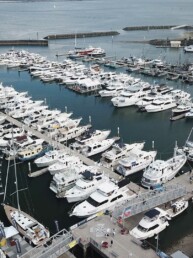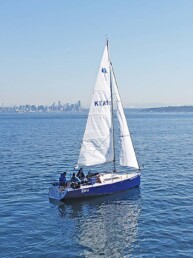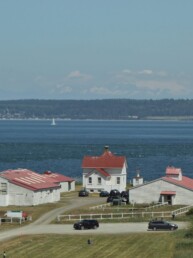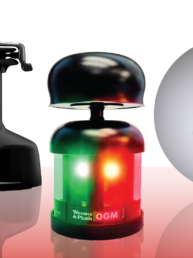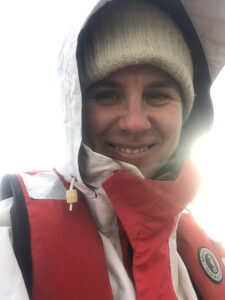
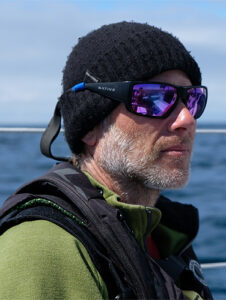 We left Orcas Island on a Tuesday in late May with our sights set on Alaska.
We left Orcas Island on a Tuesday in late May with our sights set on Alaska.
After all the pre-departure complexities and preparation, we savored the reality of finally being on our way.
It was spring 2021, and though recreational boat traffic was now being allowed through Canada, my girlfriend, Jaime, and I weren’t keen on the complexities of an Inside Passage route to Sitka. I’d experienced the scenic and mostly protected inside route to Alaska several times; we were more excited about the potential challenges, memories, and experience an offshore passage would surely offer. And we weren’t disappointed.
Since purchasing Xangala, my 1970s-era Nicholson 33, I’d been fitting out and preparing for more offshore time. Jaime and I were ready to experience swell, wind, and uninterrupted sailing again. This was the type of sailing we looked forward to, and the trip had an additional mission. A good friend, Mike, had moved to Sitka almost 16 years earlier. Mike had patiently mentored me as a shipwright, teaching me skills that serve me to this day. Embodying a rare depth and honesty, he had become one of my best friends. A visit with him was long overdue.
Catching an early morning ebb, we sailed across the Strait of Juan de Fuca to Port Angeles, our last stop before heading offshore, and ended up waiting there for two nights as a big low weakened west of the Washington coast.
Our strategy for the passage was to put “money in the bank” by gaining westing and northing. With enough westing, we could then sail on a port tack, and if the wind shifted to the northwest, we could at least make it through Dixon Entrance (remember, we were trying to avoid entering Canadian waters).
Friday morning we awoke as the light started to appear and used five of our 22 gallons of fuel getting to the entrance of the Strait of Juan de Fuca. As we neared Neah Bay, the swell began to show itself and the reality of heading offshore became real. By Cape Flattery, we started to pick up some light southwesterly winds, and the beginning of the flood began to frustrate our efforts to keep the sails filled, clear the U.S./Canada border, and head in any sort of useful direction.
As darkness fell, the wind kept increasing and backing toward the southeast. That first night was not fun — it rained, the sea state was rough, and we were both seasick. Fortunately, we were prepared mentally, our Hydrovane was working perfectly, and we were sailing at a consistent 5 to 6 knots to the northwest. Sitka, here we come!

Onward to Alaska
The next couple of days embodied a surreal sense of time, sailing under a double-reefed main and working jib in 18- to 20-knot winds and 6- to 9-foot seas. This was the first passage in Xangala for either of us, and even with our modest displacement, we had a quick three-dimensional motion in the conditions.
Our fourth morning out dawned sunny and relatively warm, with 8 knots from the west. Thinking we were in for a bit of a break, we stripped off our boots and socks, lost the wool hats, and got ready for a much-needed rest day. Alas, it was not to be.
The problems started with a minor repair to the boom vang attachment. After resolving that, I decided to charge the batteries with the engine. But when I pushed the start button, it was clear something was wrong. The labored, slow turning of the engine indicated it was under some sort of load. In gear? No.
I initially wasn’t too concerned — until I noticed that our 100-watt solar panel wasn’t working, which was two-thirds of our charging power. Our chart plotter, AIS, and running lights were really useful and we were using more power than we were generating, even with both panels working. Troubleshooting commenced, and we discovered that pressing on the flexible panel in a particular area resulted in consistent charging. We tied a small Tupperware container to the top of the dodger and tightened it down. Problem solved, though the charging capability was diminished.
Then we started on the engine issue. We decided to drain water out of the water lift and the exhaust, and removed a partition that allowed access to the side of the engine. Sweaty and long overdue for proper sleep, I was happily surprised to easily disconnect both ends of the exhaust hose from the water lift. Sure enough, quite a bit of water flowed out and into the shallow bilge. With the cabin in total disarray, I inserted the engine key and pressed the starter button. Without any hesitation, the Yanmar chugged to life and purred. Yes! I breathed a sigh of relief and looked at my watch — 6 p.m. We’d gone without sleep all day, but our minds were at ease.
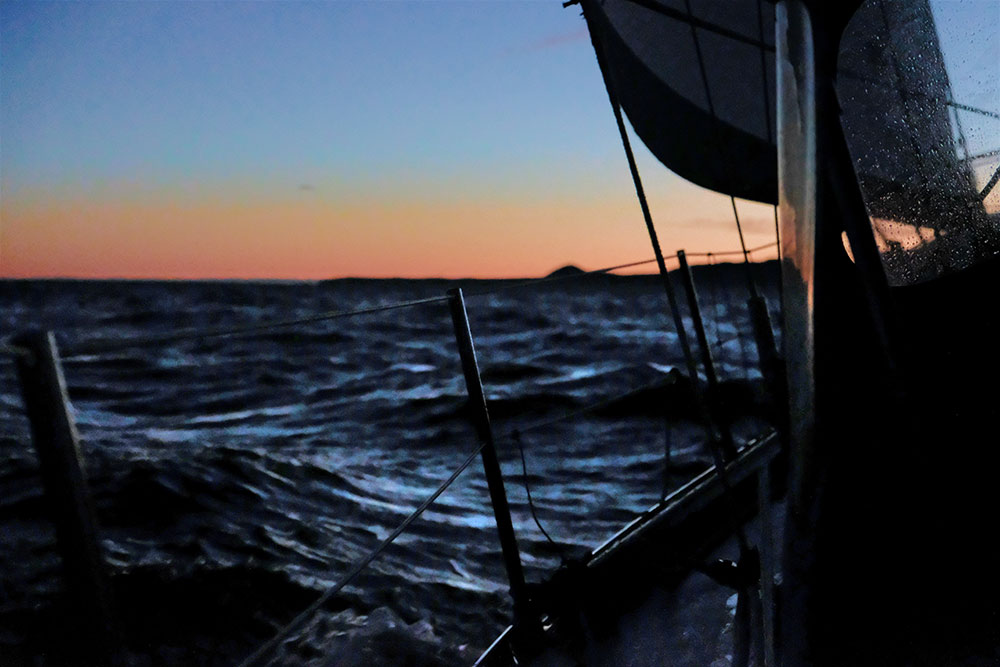
Pushing North
Checking the weather, we noticed that by afternoon on the following day, we would probably have 20 to 25 knots of southeast wind, peaking at 33 with gusts of 40 by midnight. To prepare, we rigged the storm jib on the solent stay, ate a meal, got snacks ready, and secured everything down below.
As evening approached, the wind and seas began to build. We dropped the main and ran with a little triangle of the 110 jib out. At times I thought we were sailing more conservatively than needed and had seen the peak of wind. Within a half hour, though, visibility dropped to a quarter mile, the wind picked up, and the sea state intensified.
An hour later, we were being flung down bigger seas at speeds I hadn’t experienced in Xangala. In the growing darkness, it felt too fast. The apparent wind was showing 30 to 33 knots and our boatspeed was 6 to 7 knots, sometimes hitting 10. In an attempt to slow the boat, I decided to tow a warp to see what that might feel like. We got out a heavy nylon rode, flaked its 250-foot length into the cockpit, carefully made fast the two ends, and let it stream astern in a long bight, each end tied off on the quarter cleats.
I expected a lot of resistance once the line was paid out, but it was fairly easy to pull in either end by hand and didn’t really seem to affect our speed much. What did stop, though, was the feeling of being on the edge of control in the bigger surfs.
Hearing the seas sloshing onto the deck or whacking the side of the hull, I ruefully chuckled at the discomfort we intentionally subject ourselves to. There comes a time when you just have to trust; I needed to sleep, and incredibly, I was able to.
The howling in the rigging started to fade intermittently, and at 4 a.m., we hoisted the main with a single reef and increased the jib area to keep the boat powered up in the sloppy seas. This is always the worst part of rough weather — when the sea state is far beyond normal for the wind speed. We pointed up a bit to increase the apparent wind and keep steady pressure on the sails.

The Homestretch
On day seven, Baranof Island slowly came into view. We were almost paralleling the island’s coast, closing in at a very shallow angle, so it didn’t appear to be getting closer very quickly, despite our 6-plus knots in the blustery beauty. We were grateful to have such good conditions for making miles on what might be our last day of the passage. Numerous humpback whales appeared and as evening stretched on, the cloud cover broke up and thinned, golden light setting the coast aglow.
Sitka Sound was tantalizingly close, yet unreachable for now. As the sun set, I collapsed on the bridge deck while Jaime hand-steered. We were still 10 miles from Biorka Island and its reefs marking the southern opening of Sitka Sound. I nodded off, waking every 15 or 20 minutes to witness the melding of sunset to a luminous red twilight, to sunrise. Remarkably, it never got dark!
With the pre-dawn glow came a brisk 10-knot breeze from the northwest that allowed us to sail close-hauled on a port tack directly into Sitka Sound. I went below to fall asleep on the cabin sole, trusting Jaime’s awareness and helmsmanship. When I woke, I felt Xangala’s powerful movement through the water. I took in the sight of Jaime confidently steering, a big smile on her face as the wind whipped her hair.
Out the companionway, Mount Edgecumbe, a dormant volcano striped with snowfields, commanded the sky to the west. To the east, snow-capped peaks on Baranof Island caught the morning light. We spotted a small pod of orcas, the morning sun glinting on their dorsal fins. Grinning ear to ear, we were captivated by the world around us. We couldn’t believe how gorgeous and magical this moment was.
Studying the entrances to Sitka Harbor, we chose the west one and literally sailed right to the breakwater, then started the engine. We’d arranged to tie up in a slip right next to my friend Mike’s boat, Nepenthe, and soon we were all eating breakfast and sipping coffee aboard. The warmth of this reunion felt like a natural extension to the utter magic of our landfall.
From Port Angeles to Sitka had taken us eight days and two hours. We had sailed from Neah Bay to Sitka Harbor, with only a half-hour of engine use to charge the batteries. And while not all of it was easy, it certainly was rewarding.
Matt Nelson has been adventuring in North Pacific waters since early childhood, sailing in Alaska, British Columbia, Mexico, and Hawaii. A licensed captain, he enjoys working with sailors on their vessels through his business The Fluid Life Coaching, helping clients gain experience and confidence in the many skills inherent to sailing offshore, singlehanding, and cruising.


